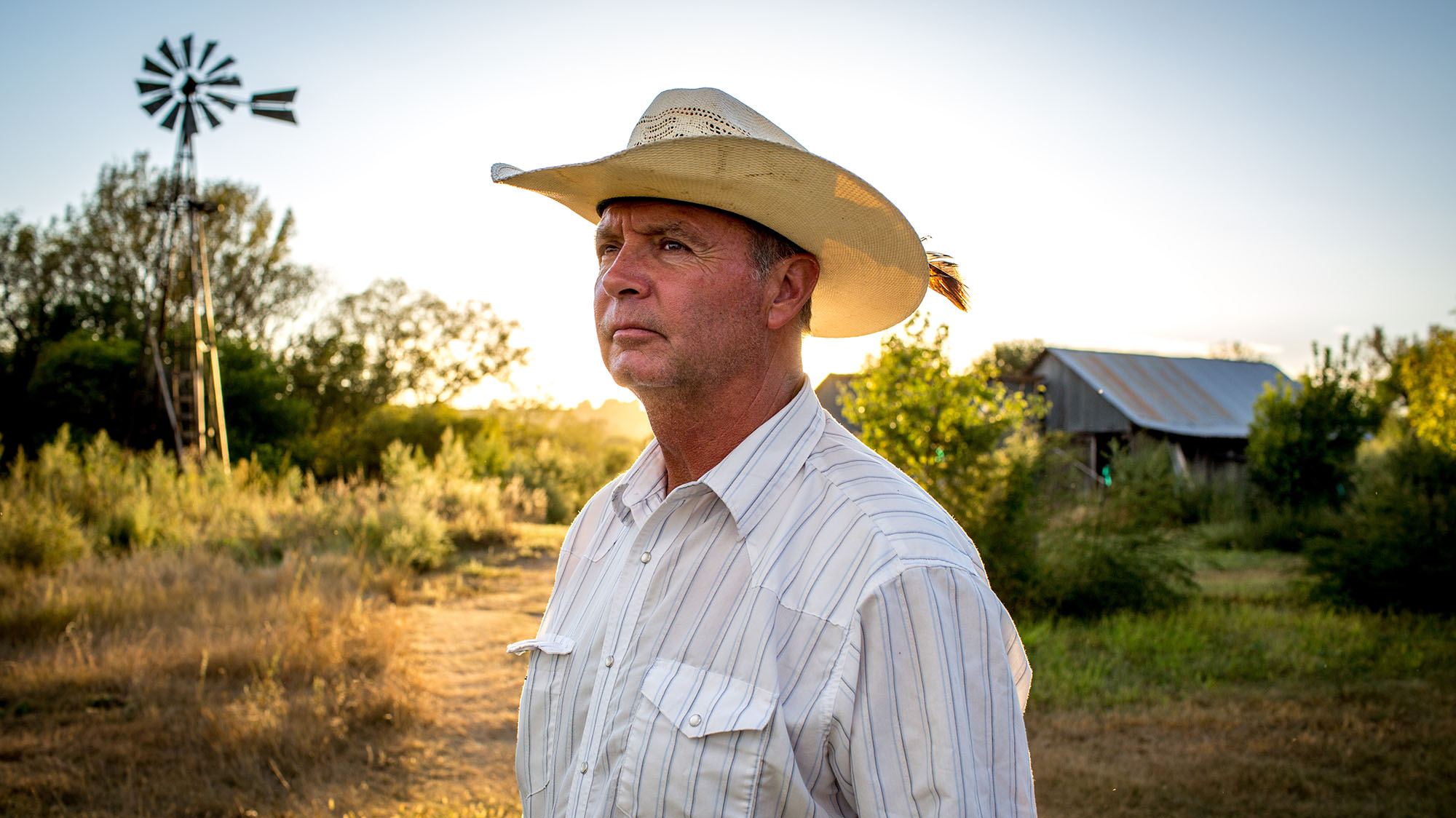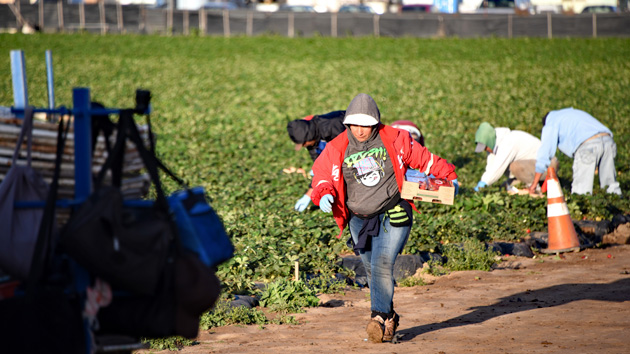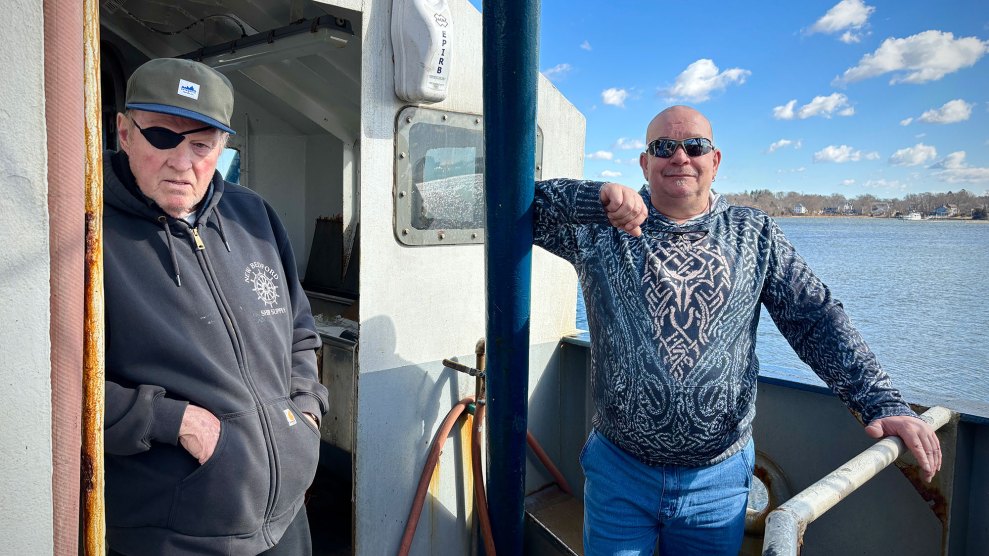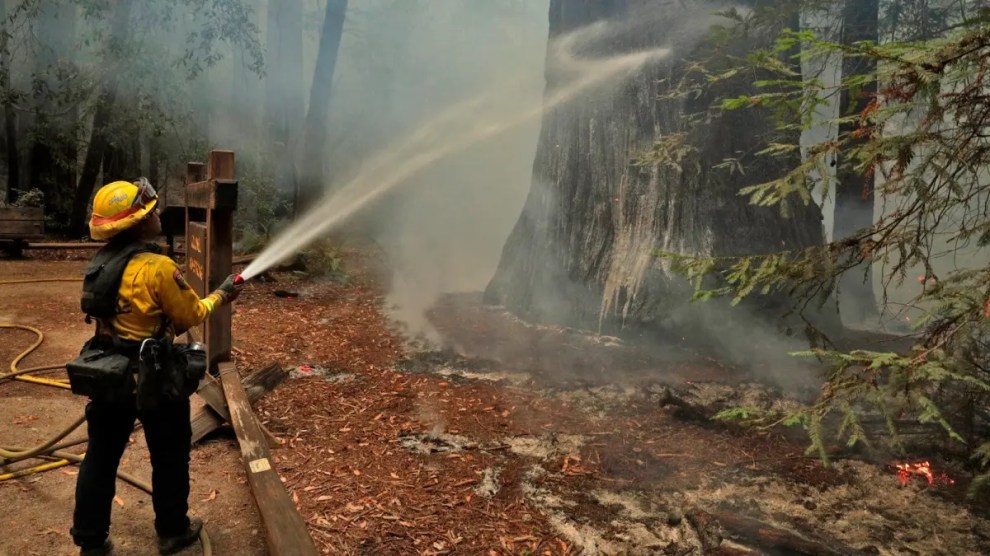For his new book, writer Ted Genoways set out to document the whole process of a farm year, from harvest to harvest. When he started following around the Hammonds, a farming family in Nebraska, in 2014, “commodities prices were at near record highs, everything was going great,” Genoways told us on a recent episode of Bite podcast. But within six months, those prices crashed. “Everything got really tough. It was really brave on the part of the family to continue to let us follow them around, even though things had really gone from boom times to bust, and there was a lot of uncertainty and a lot of tension.”
In the interview, Genoways also talks about how the political conversations among rural farmers—who voted overwhelmingly for Donald Trump in the last presidential election—has shifted over the course of the past year. “Farmers are starting to realize the real threats this could pose to their livelihood.” The interview starts at around 11:15.
Below is an excerpt from This Blessed Earth, by Ted Genoways.
The last yellow hues of evening were fading to blue. A bright circle of sun blazing through an uncapped vent in the roof had climbed the corrugated side of the grain bin and smoldered out like an ember. Now the only remaining light, there in the dark interior, was the flame of Kyle Galloway’s cutting torch—first a flickering orange tongue, then as he adjusted the hissing valve, a bright cerulean cone of fire. Sparks showered and bounced across the concrete slab as he cut another steel plank down to size.
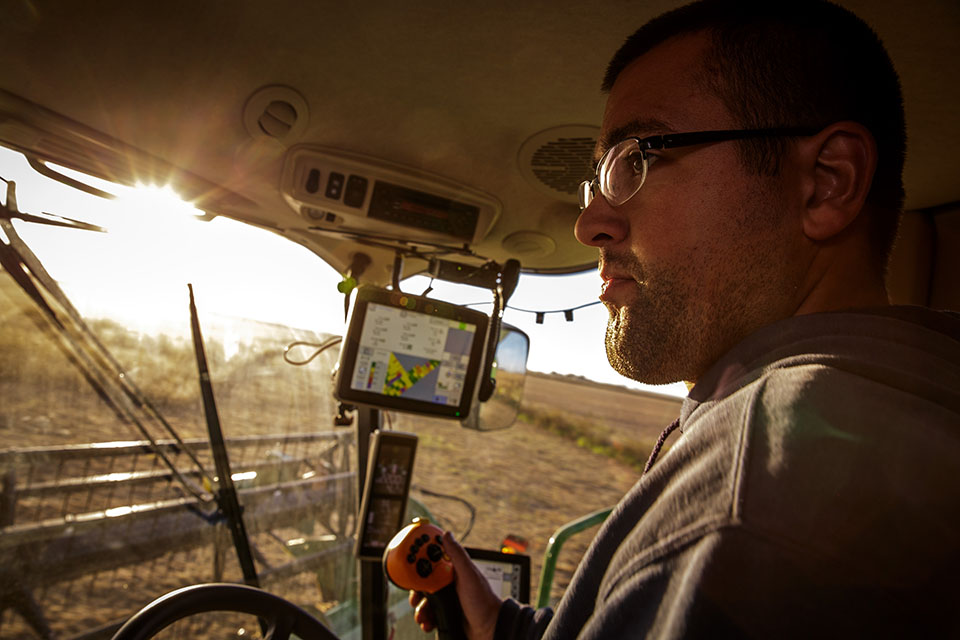
Mary Anne Andrei
Still in his twenties, Kyle was broad-chested with dark, buzz-cut hair and a gentle round face and glasses that give him a kindly, almost childlike air. But he moved through his work with quiet authority, inching across the width of the plank until the unwanted end clanked on the concrete. Kyle paused a beat to let the fresh cut cool, then he laid the plank into place, the next piece in a floor now nearly half done, and stomped it again and again with his heel. Each boot-fall roared loud as thunder, shaking the whole structure, until the section snapped tight. Kyle stepped up, bouncing to test its soundness. Then, satisfied, he leaned through the open portal door.
Outside, in the gathering dark, Dave Tyson, the farm’s hired man, handed over the next section of floor. Dave wore a ball cap and round glasses of his own. Easily twenty years Kyle’s senior, he seemed to be making a conscious show of keeping pace. The sleeves of his flannel shirt were torn off, and the last of the summer heat formed a film of sweat on his pale biceps, the muscles tensing and flexing as he hoisted the flooring. Salvaged from an older bin on a distant part of the acreage, these planks had been laid up in a defunct hog shed for years. But nothing ever goes wholly to waste on the farm. Old tractors and field trucks, hay rakes and a faded harvester all stood tucked away in leaning barns or grown over by tall grass at the edge of a shelterbelt, dormant but awaiting purpose. For this flooring, it was finally here.
At the end of June 2014, crop counters at the US Department of Agriculture had released estimates that the summer’s mild weather and increased rainfall would mean a much higher than expected yield. It’s the kind of prediction that sounds like good news, but for farmers it meant an upcoming glut of grain. One report projected that the national soybean yield would be 3.3 million acres higher than expected at planting—not just cutting into profits but actually outstripping domestic demand. The outlook for corn was little better. Though acres planted to feed corn were down, the stockpiled reserves from the record yield of 2013 remained at an all-time high. On news of such unprecedented surpluses, corn and soybean futures nosedived among speculators at the Chicago Board of Trade. After several years of riding high on $8 corn, farmers watched prices fall to $3.50 per bushel. Soybeans, which had topped $17, dropped below $10.
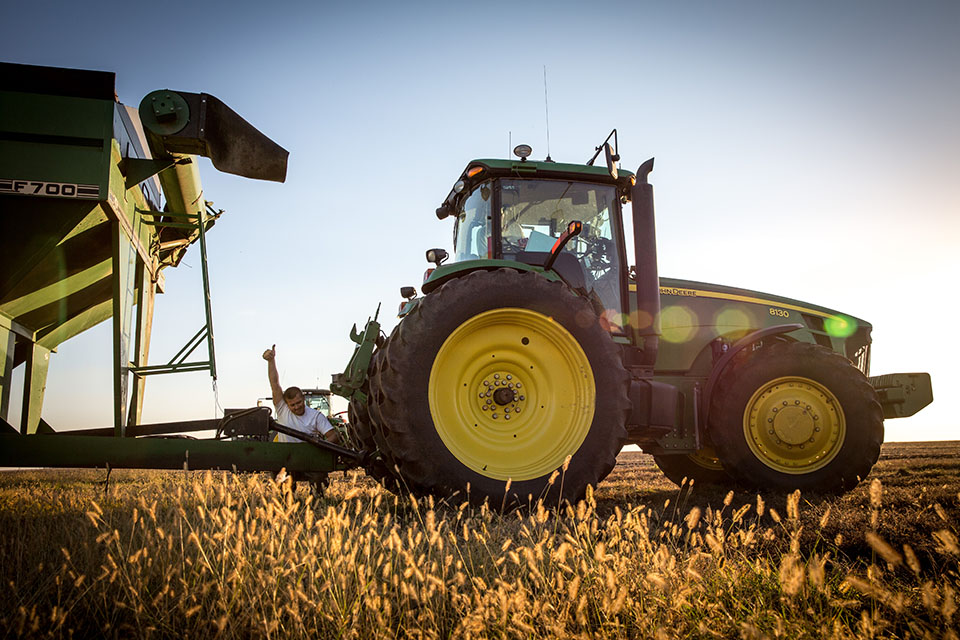
Mary Anne Andrei
Then in August, in the weeks just before harvest, a series of downpours moved across the middle of Nebraska, dumping two and three inches of rain at a time, pushing back the start date for bringing in the beans. While Kyle and Dave waited anxiously for fields to dry enough that a harvester wouldn’t mire in the mud, projections for the national yield kept going up and up. Every day that the crops stayed out, unharvested and undelivered to the co-op, the per-bushel prices went lower. For weeks in nearby towns, at the firehouse in Hordville and the bar in Polk, even at the Iron Skillet at the truck stop south of York, the talk had turned to the Jews in Chicago making bank on the backs of farmers. Kyle didn’t have time for that. He rolled his eyes and shook his head at old-timers who were drinking coffee and bullshitting instead of doing what they could to cut their losses.
Kyle didn’t own this acreage, just south of the Platte River in east-central Nebraska, but his girlfriend Meghan Hammond was part of the sixth generation of her family to live and farm in this area—and Meghan and Kyle were starting to talk about a wedding in the next year. Once that happened, Meghan’s father Rick figured it would be time to give them a stronger hand in the operation. When people ask Rick what he raises on his farm, he always responds, “Corn and cattle and kids.” By the end of the year, if all went as planned, Meghan and Kyle wouldn’t be kids anymore.
But handing over control of the operation—“succession,” as it’s known—is one of the hardest times in the life of any family farm. The older generation always struggles to let go of the reins, to trust their kids to carry forward a long and fragile tradition. The younger generation bridles against the meddling and second-guessing and feels the double weight of scrutiny and doubt in every misstep. Many farms don’t officially change hands until the older generation dies, leaving the rising generation beholden to their parents until they’re well into adulthood and often into their fifties or sixties. It breeds resentment and too often divides generations or turns brothers and sisters against each other. It is so stressful and legally complex that there are psychiatrists and attorneys alike who build whole practices around helping families navigate the process. But on the Hammond farm, it was even more complicated than that.
The collapse of commodities prices was forcing the family to wrestle with how best to run the farm in the future. Years ago, Rick had tried raising organic corn and direct marketing his grass-fed black angus cattle, but those efforts had largely failed. Now, he was not only planting Roundup Ready crops for commercial sale but actually growing GMO seed corn for Pioneer to sell to other farmers. He said he couldn’t say no to the above-market rates that Pioneer pays those who raise their seed stocks. Over the years, that increased income allowed Rick to expand his operation, but now he’d come to rely on it. Without the premium from Pioneer, a down market, like the one his family was facing in the coming year, would place the whole farm at risk. And even Pioneer is not impervious to the vagaries of the Board of Trade. With per-bushel prices so low, the company was worried that there would be less demand for corn seed in 2015. So Rick had been informed that Pioneer intended to reduce the number of acres they were planting—and, with it, reduce payments to the farmers who planted for them. The company just didn’t know where it would cut yet or by how much. “The seed corn is about half of what we raise,” he told me. “If they gave us all that we try to shoot for, it’s more like three‑fourths.”

Mary Anne Andrei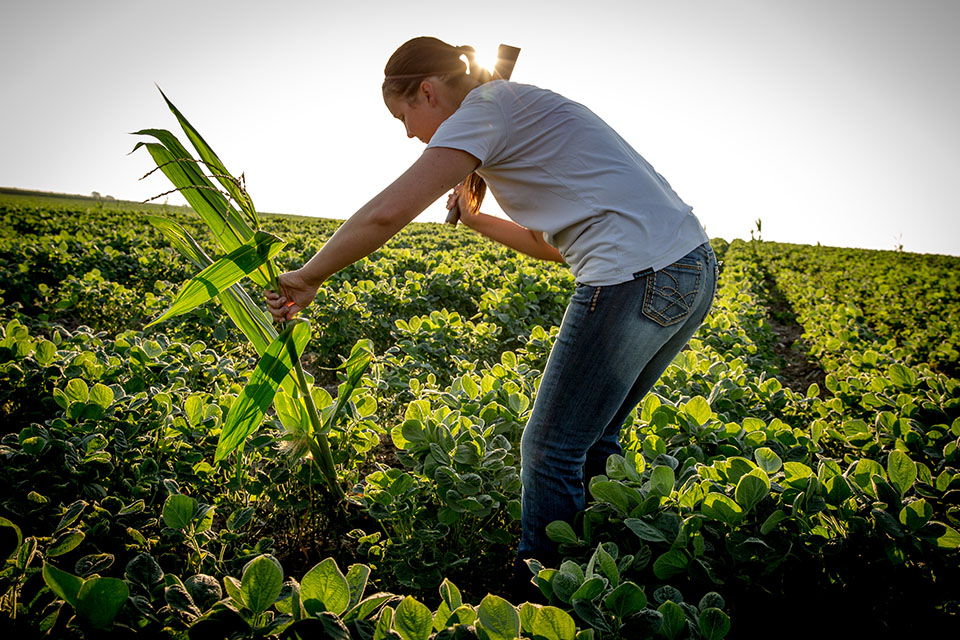
Mary Anne Andrei
Without that money coming in, Rick knew that he couldn’t afford to buy new machinery for the year, couldn’t afford to replace his center-pivot irrigation system. He needed to have a full year of paying down those loans, not incurring new debts. He needed a year in which everything went right—crops came in early and healthy, prices rebounded, equipment held out. And if he was forced to take out more loans, he needed interest rates to stay low. “We’re trying to tighten our belt and get rid of machine debt, pivot debt, and then get it down to land debt,” he told me.
And that penny-pinching would be all the more important as the family faced the still-uncertain fate of the proposed Keystone XL. That pipeline project, intended to carry heavy crude pumped from the Alberta tar sands in Canada nearly 2,000 miles to Port Arthur and Houston on the Texas Gulf Coast, was slated to cut right through major portions of the family cropland. Meghan and Rick vehemently opposed the project, arguing that it would not only further slash their crop production but that it also posed an existential threat to the Ogallala Aquifer, the underground reservoir of freshwater that they depend on to irrigate crops and water their cattle.
Rick even agreed to let the anti-pipeline nonprofit Bold Nebraska build a solar-powered barn, the so-called Energy Barn, on land he rented from his in-laws. The publicity had brought in an unexpected amount of national press, culminating in Willie Nelson and Neil Young joining forces with Bold Nebraska to mount the fund-raising Harvest the Hope concert in the cleared cornfield of Art Tanderup, a friend of Rick’s near Neligh, Nebraska. But unpublicized amid all the hoopla was the reality that the barn, built in the middle of a productive piece of farmland, had cost him still more precious acres of ground, acres he had planned to plant to soybeans that year.
Worse still was a letter that arrived soon after from one of Rick’s neighbors. He had rented hundreds of acres to Rick for many years, but now, in protest, was pulling out of that long-standing agreement—a move that was likely to cost the Hammonds between $150,000 and $200,000 of gross income for the coming year. The cancellation letter made no bones about the reasons: “I am sorry to inform you that your outspoken endorsement of defeating the Keystone Pipeline is not in our common interest. While it is certainly your right to support whatever causes you wish, we have chosen not to subsidize those expenditures.”
With these financial hurdles ahead, Rick had decided to take some calculated risks. He planted almost entirely soybeans for the fields not already set aside to raise seed corn for Pioneer, because the bean prices seemed steadier, and he went with short-season beans, hoping to get the harvest in ahead of the inevitable market decline. Some giant grain companies, like Archer-Daniels-Midland, will even pay out a premium early in the harvest. “I planted really short‑season beans, planning on getting it to ADM,” Rick told me, “because there might be a dollar bonus above your elevator if you can get it in before the rush.” He also made the decision to wait on marketing his beans, rather than locking in spring prices. Most years, he would have seen spring futures as good enough to hedge against fluctuations, but this year he’d decided to take a chance. “I’m not nearly as forward contracted this year as I usually am,” he said.
That crop, waiting to be harvested and sold by the truckload at whatever the market would eventually bear, was where the family was either going to make money or see a whole year’s labor turn into a break-even proposition—or worse. With the weather conspiring to increase the national yield and push prices lower by the day, while leaving Rick’s fields too soggy to get out and harvest those short-season beans, he was losing money with every passing hour.
So Rick had decided to lay a concrete footing and move in an old grain bin. He would put up as much of the soybean harvest as possible—and, with luck, wait out the down market. When he and Kyle brought the bin in and put it in place with a crane, he explained that even this stubbornness was its own form of risk. Grain in the bin is given to rot—and, of course, there’s always the chance that prices will continue to fall. But you control what you can. Don’t increase your risk by investing in a new bin, but make sure the old one is tight and well-ventilated. Make sure the floor is raised so an industrial blower can force through enough air to keep the grain dry. And after everything that’s already happened, be realistic.
“You have some hard headed old timers that say, ‘By God, beans were at $17 two years ago, and I’m going to leave my beans in the bin until it’s $17 again.” Rick shook his head. “You want to say: ‘At your age? Good luck with that.’ It’s not going to happen.” So, in your heart of hearts (though you’d never admit it, not even to your neighbors), you pray for rootworm in Chile, for hail on the open plains of Illinois, a late-season catastrophe unforeseen by the USDA. You hope for what the trader’s call a “market recovery,” knowing that what that really means is that, in order for you to succeed, someone else as careful as you, through no fault of his own, has to fail.
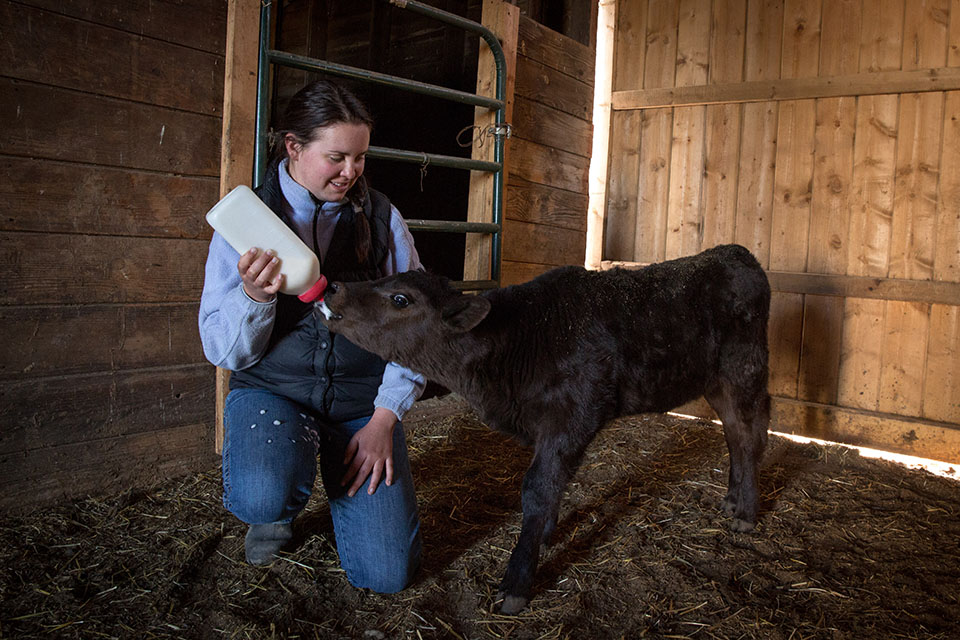
Mary Anne Andrei
Mary Anne Andrei
In the last light of the day, Kyle stretched the tape measure from one wall of the bin to the other, marked the spot on the next floor piece with a nub of blue chalk. Then he was back at the torch. He struck the igniter, and the nozzle burst again into flame, sparks skittering and bounding across the concrete as he made another cut. By the time he finally paused his work for the day and walked back to the house, it was full dark. Meghan was already in the kitchen, back from nightly chores—feeding the goats and horses, checking on cattle, closing up the laying hens until morning. She had four chicken breasts cooking in the fry pan. Kyle kicked off his boots in the mudroom and padded quietly around the kitchen. Worry was heavy in the air. With harvest now two weeks late, Meghan was on edge too. The smallest provocation could turn her fiery eyes, usually wide with emphasis, to a cold stare. She was the first to admit that growing up on the farm with a twin sister and two other siblings had made her quick-tempered and sharp-tongued, but those years have armed her with a winning sense of humor. She could punch you in the arm hard enough to convey honest frustration and simultaneously, somehow, forgiveness.
This tension was different. It wasn’t nervy but nervous. Meghan and Kyle both knew that the later in the season the harvest begins, the deeper in the year you go toward winter—and the chance of yield-loss due to ice or snow. If you suffer crop-losses when prices are down, there’s no chance of catching a market rebound. Then you become the sucker whose losses faraway farmers cheer. You take what the insurance adjustor gives you and try to make it through the next year. Flipping the chicken breasts with a fork, Meghan let out an exasperated moan, then launched a sardonic recitation of the wisdom she’d heard a thousand times. “Two things with farming,” she said, putting on her dad’s voice, “you can’t control the weather, and you can’t control the markets.”
Meghan loves to joke about Rick’s penchant for teachable moments, but she knew that if her dad was going to step back and eventually retire, then she and Kyle not only had to work hard. They had learn to make the smart decisions that give them the tiny edge that is often the difference between the kind of success that allows you to add equipment and acres and the kind of loss that eventually leads to a farm sale. With so much riding on the next year, Meghan said she would feel a lot better, if they could just get out in the fields.
“You’re putting inputs all year, with money and hard work and lots of effort,” she said. “And one bad storm could wipe it all out.” She moved from the stovetop to the sink, filling water glasses and staring out the window, as if she could see the brittle rows of ready soybeans and the browning cornstalks beyond the edge of their yard—though it was now so dark that the glass was a mirror, reflecting her face by the kitchen light.
“It’s your payday,” Meghan said, “the one time of year that we’re actually making money, instead of shelling out.” She took a deep breath. “It’s a field of dollar bills out there.”
Kyle cracked a wry smile. “And they could just blow away.”
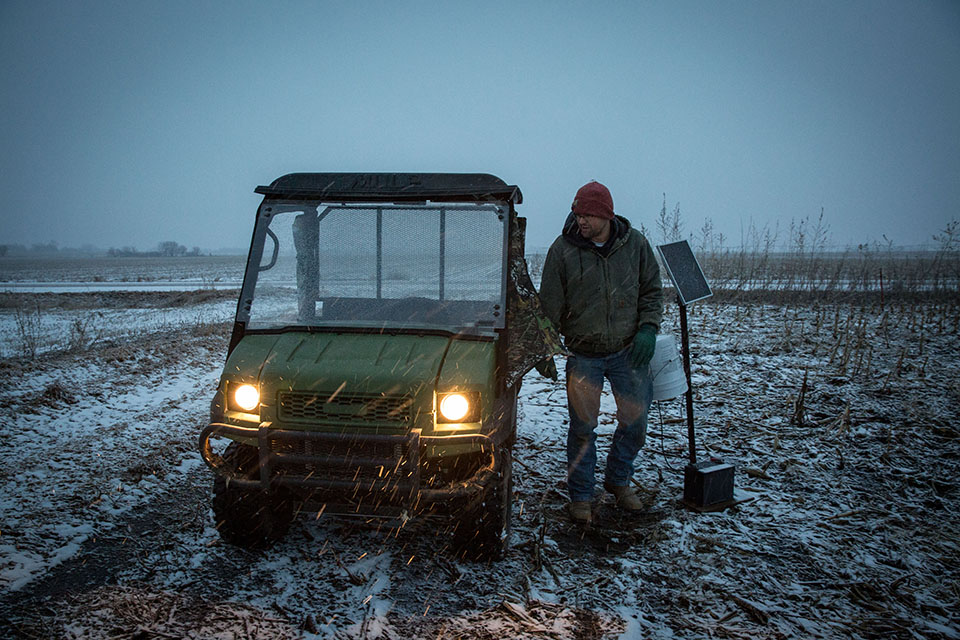
Mary Anne Andrei
